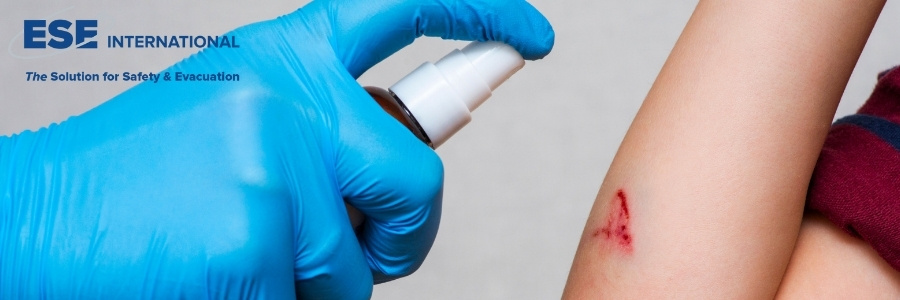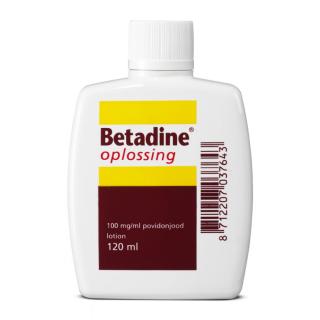Het ontsmetten van een wond is zeer belangrijk tijdens wondverzorging. Het helpt om infecties te voorkomen en bevordert een snelle genezing. Of het nu gaat om een kleine snijwond of een schaafwond, een juiste ontsmetting is essentieel om complicaties te vermijden. In dit kennisartikel behandelen we waarom en hoe je een wond ontsmet.
Waarom een wond ontsmetten?
Het ontsmetten van je wond is belangrijk om bacteriën en andere ziekteverwekkers te verwijderen. Wanneer je een wond niet goed reinigt, kunnen bacteriën zich vermenigvuldigen, dit kan leiden tot een infectie.
Een geïnfecteerde wond kan pijn, zwelling en roodheid veroorzaken en in ernstige gevallen, tot koorts en verdere gezondheidscomplicaties leiden.
Het is dus van groot belang dat je altijd een wond op de juiste manier ontsmet.
Hoe ontsmet je een wond? Volg deze stappen!
Het ontsmetten van een wond moet je zorgvuldig aanpakken om het risico op infecties te verminderen. Volg onderstaande stappen om een wond juist te ontsmetten:
- Stap 1 handen wassen: was je handen grondig met water en zeep om te voorkomen dat er nieuwe bacteriën in de wond terechtkomen.
- Stap 2 wond spoelen: spoel de wond af met schoon, stromend water om vuil te verwijderen. Dit is belangrijk om de wond voor te bereiden op ontsmetting. Krijg je niet al het vuil uit de wond gespoeld? Dan kan je voorzichtig met een pincet de overige vuilresten verwijderen.
- Stap 3 huid drogen: droog de huid rondom de wond voorzichtig met een schoon steriel gaasje of doek.
- Stap 4 ontsmettingsmiddel aanbrengen: breng een ontsmettingsmiddel aan, zoals een alcoholvrije antiseptische oplossing, om de bacteriën in de wond te doden.
- Stap 5 huid deppen: laat het ontsmettingsmiddel even inwerken en dep het voorzichtig droog met een nieuw steriel gaasje.
- Stap 6 wond afdekken: dek de wond af met een steriel verband of een pleister om deze te beschermen tegen vuil. In het geval van zeer oppervlakkige wonden zoals lichte schaafwonden kun je de wond ook onafgedekt laten.
Let op! Vermijd het gebruik van watten om de wond schoon te maken, deze kunnen namelijk gaan pluizen.
Waarmee kan je een wond ontsmetten?
Er zijn verschillende ontsmettingsmiddelen waarmee je een wond kan ontsmetten:
- Chloorhexidine-oplossing: een ontsmettingsmiddel dat vaak wordt gebruikt bij het ontsmetten van wonden. Het bestaat vaak uit een combinatie van chloorhexidine en alcohol.
- Jodiumhoudende oplossingen: zoals povidonjodium, deze werkzame stof staat bekend om de antibacteriële eigenschappen.
Welke middelen moet je vermijden
Niet alle middelen zijn geschikt om een wond te ontsmetten. Vermijd het gebruik van de volgende middelen:
- Pure alcohol: een wond ontsmetten met pure alcohol kan zeer pijnlijk zijn. Daarnaast kan het weefsel in de wond beschadigen, waardoor je alleen maar het genezingsproces vertraagt.
- Waterstofperoxide: Hoewel het soms wordt gebruikt, kan het bij overmatig gebruik het gezonde weefsel beschadigen.
- Sterke zeep: sterk reinigende zepen kunnen je huid irriteren en de wond verder beschadigen als je gevoelig bent voor bepaalde bestandsdelen.
Overige hulpmiddelen voor het ontsmetten van een wond
Naast ontsmettingsmiddelen zijn er andere hulpmiddelen die nuttig zijn bij het verzorgen van een wond:
- Steriele gaasjes: steriele gaasjes zijn ideaal voor het schoon deppen en drogen van een wond.
- Pleisters: pleisters zijn handig om kleine wonden na ontsmetting af te dekken. Ze bieden bescherming tegen vuil en eventueel schuren van kleding.
- Verband: om grotere wonden af te dekken is een gaasje in combinatie met verband gewenst om extra bescherming en steun te bieden.
- Pincet: je kan een pincet gebruiken om overige vuilresten te verwijderen die na het spoelen zijn blijven zitten.
Wanneer raadpleeg je een arts?
Het is verstandig om een arts te raadplegen in de volgende gevallen:
- Bij een diepe wond of hevige bloedingen.
- Bij tekenen van infectie, zoals pusvorming, toenemende roodheid, zwelling of warmte rondom de wond.
- Als je twijfel hebt of je de wond goed gereinigd hebt.
- Als de wond veroorzaakt is door een dierenbeet of vuil voorwerp.
- Wanneer je een wond hebt opgelopen en je tetanusvaccinatie niet recent is bijgewerkt.
Medische disclaimer: laat bij twijfel over behandeling de wondverzorging altijd door een gekwalificeerde medisch professional uitvoeren. Neem in geval van ernstige verwondingen direct contact op met 112 of raadpleeg een arts.








